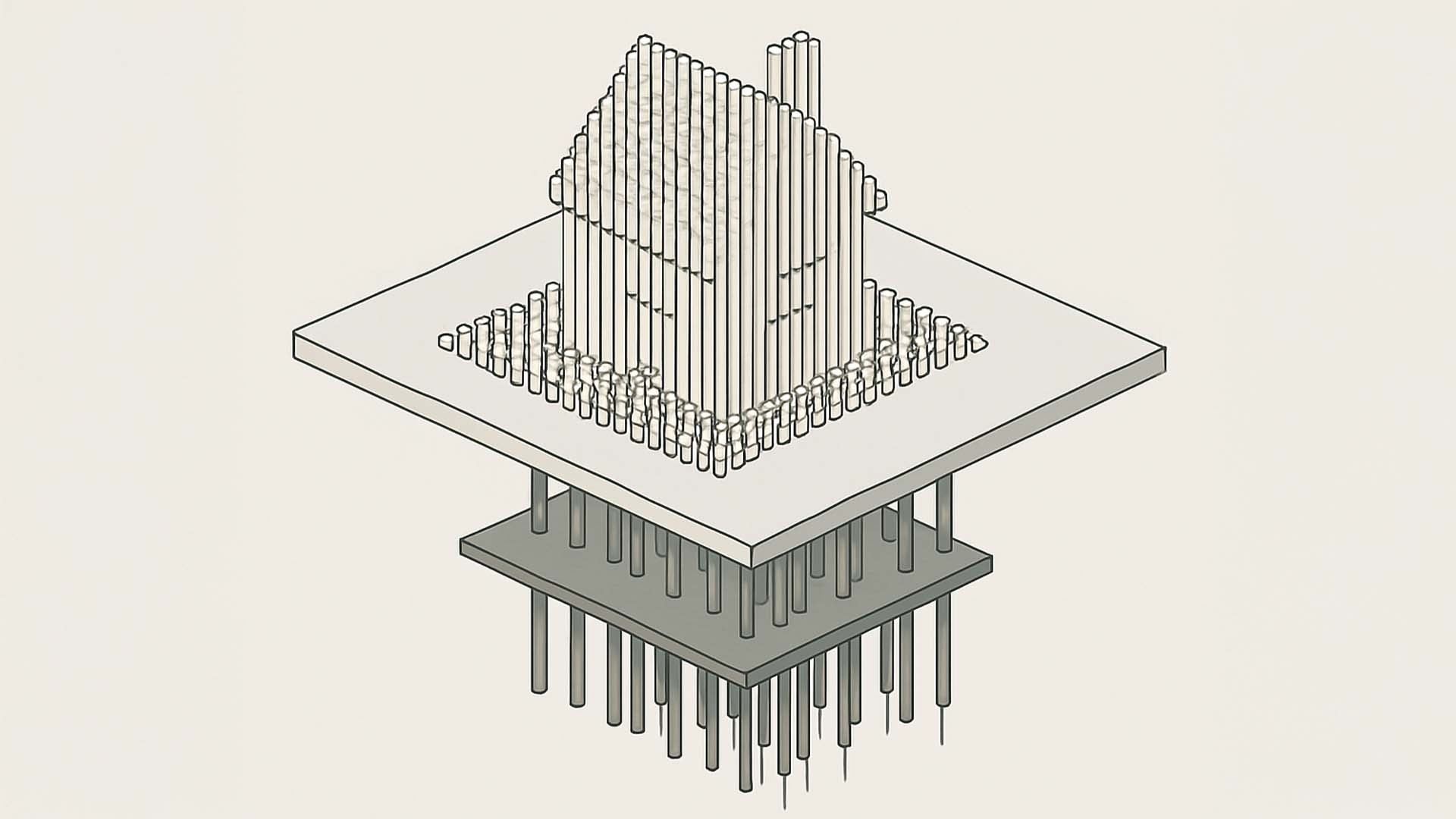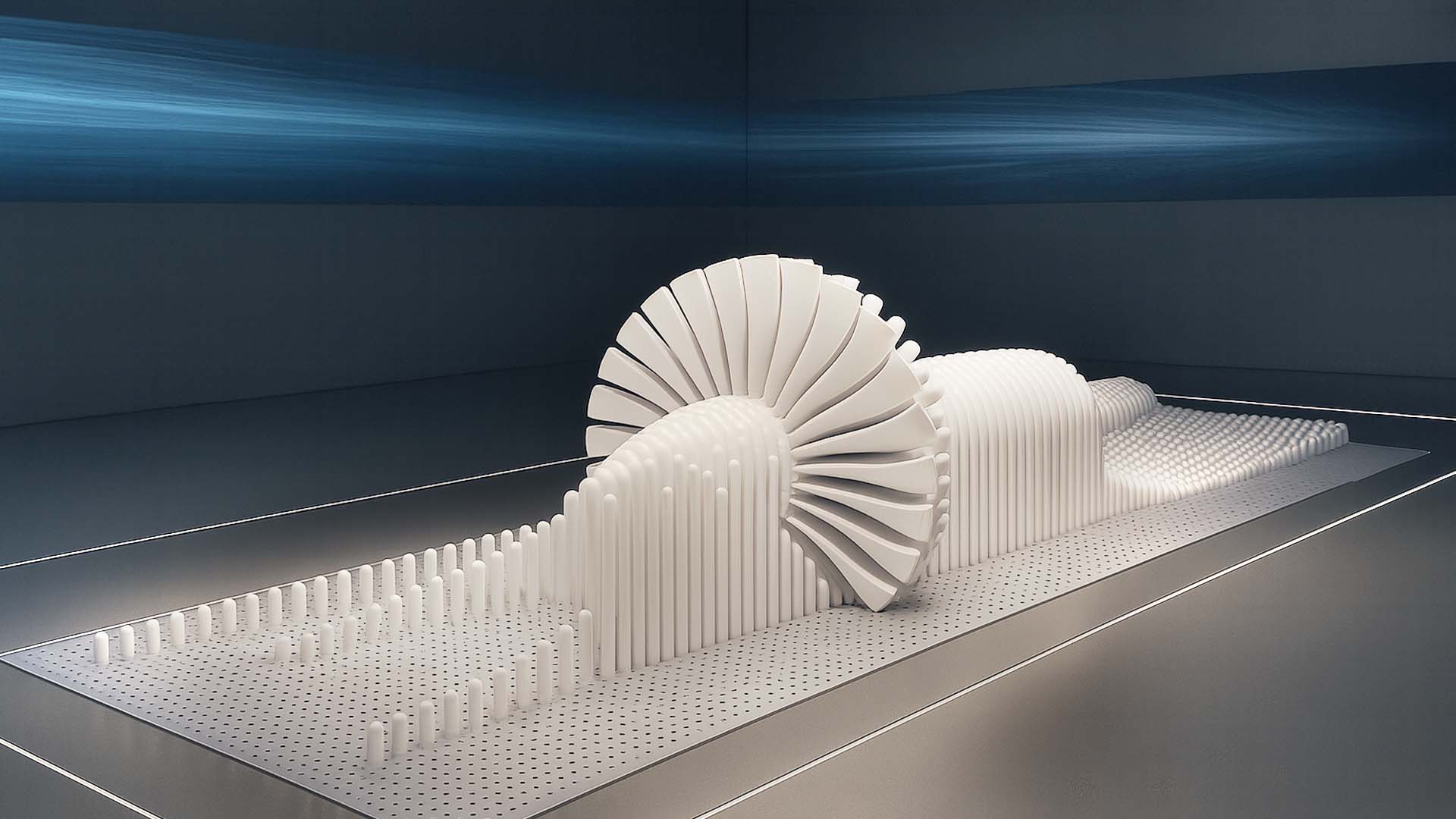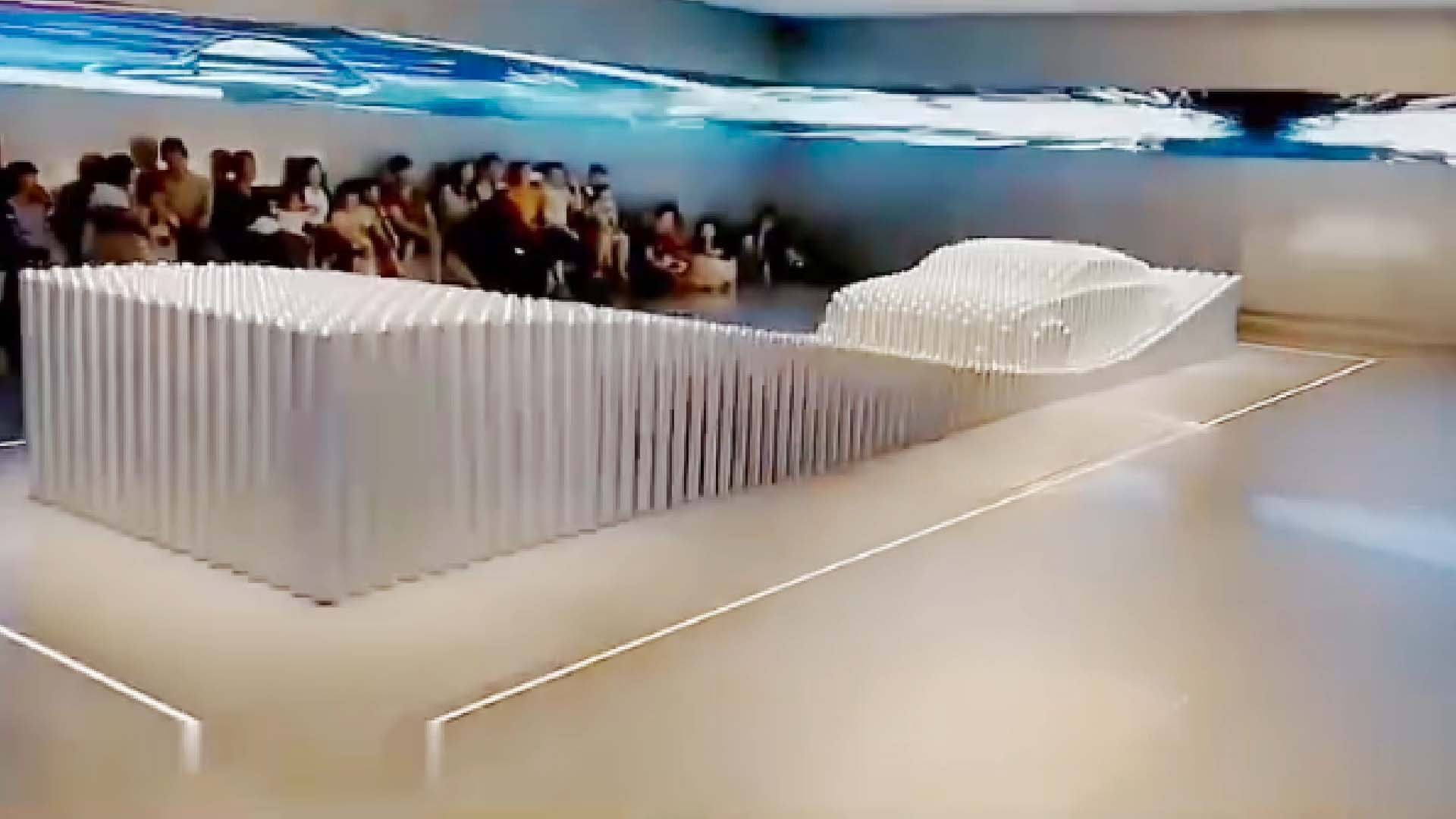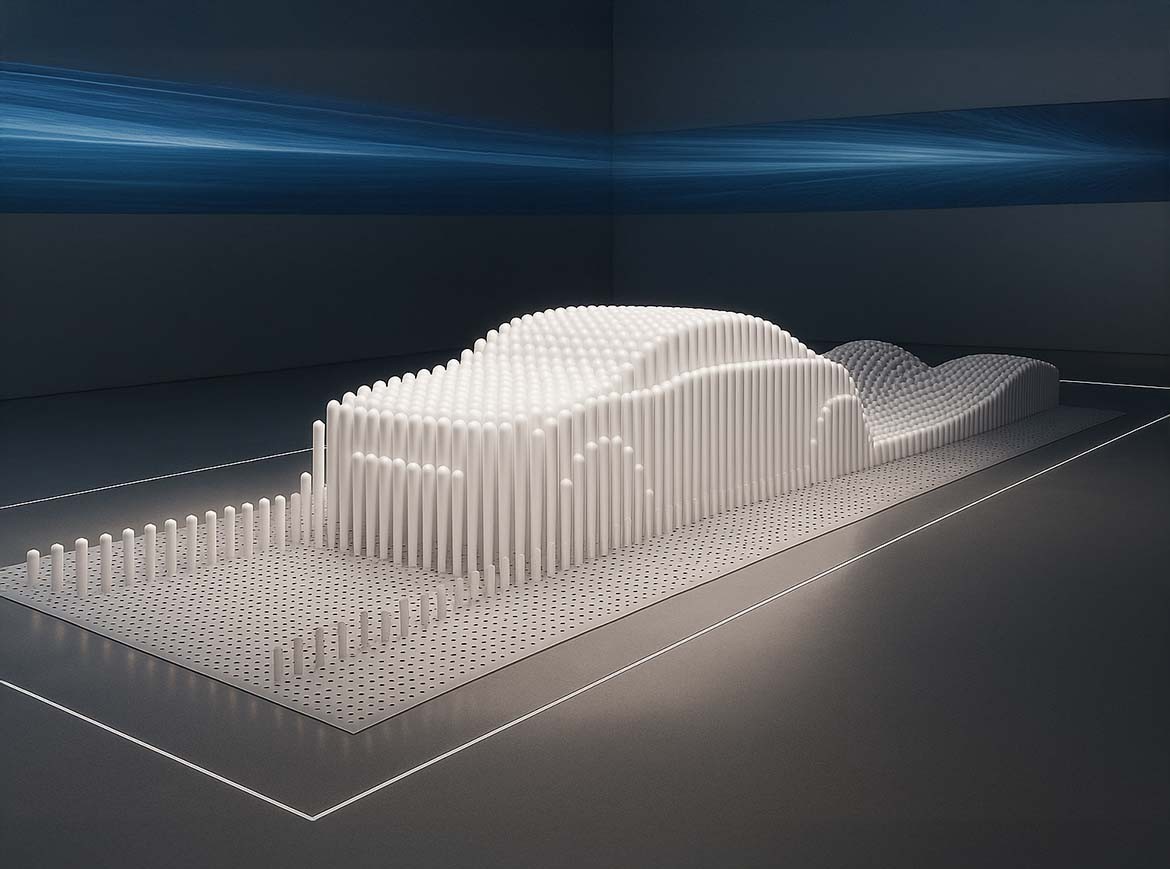Physical Data, Moving Reality – Kinetic Displays as Tangible Interfaces Between AI, Design, and Engineering
Visualization: Ulrich Buckenlei Visoric GmbH, Concept Visualization 2025
Introduction: When Data Turns Into Physical Form
Imagine a table where hundreds of mechanical pins rise to create a three-dimensional shape – live, in motion, driven by data. Sometimes it becomes the silhouette of a car, sometimes a landscape model, or an abstract pattern responding to movement in the room. This technology is called a kinetic display. It’s a surface of movable pins precisely controlled by motors. Each pin acts like a physical pixel. Together, they form an animated surface that reshapes with millimeter precision – in real time, synchronized to digital signals.
Originally developed in research labs like the MIT Tangible Media Lab, this technology has gained new relevance in recent years thanks to advances in artificial intelligence, sensor systems, and real-time computing – not as a gimmick, but as a new human-machine interface.

Dynamic 3D model using movable pins
Visualization: Ulrich Buckenlei Visoric GmbH, Concept Visualization 2025
How It Works: From Digital Input to Physical Form
The technical principle is simple yet fascinating: Beneath a modular plate lies a dense grid of actuators – small mechanical drives that can raise or lower individual pins. These are controlled by a central digital system that translates data into motion signals.
These data inputs can come from a wide range of sources:
- CAD data: to visualize technical designs in 3D
- Sensor systems: to respond to touch or movement
- Artificial intelligence: for shape generation or pattern recognition
The benefit is clear: What is usually simulated on-screen becomes physically tangible. Designs can be touched, spatially evaluated, and emotionally experienced – long before a prototype is ever built.

Mechanical actuators in a kinetic display setup
Visualization: Ulrich Buckenlei Visoric GmbH, Concept Visualization 2025
Applications: Where the Benefits Are Already Tangible
Several leading companies already use this technology. BMW uses it in research to dynamically display airflow around vehicle shapes. Lexus and Hyundai have showcased design concepts at trade shows using physical shape-shifters that move in sync with audience interaction. At MIT, tactile interfaces are being developed for educational and media systems.
These real-world applications demonstrate:
- Automotive development: Aerodynamic models and design studies as moving 3D objects
- Experience spaces & events: Dynamic sculptures as information or show elements
- Research & education: Haptic interfaces for complex data models

Interactive exhibition installation with real-time deformation
Visualization: ledpixelstick Instagram 2025
Why Now? AI, Real-Time, and the Leap to Scalable Systems
What makes this technology economically attractive today is the convergence of several trends:
- Computing power: Real-time calculation of complex shapes is now widely available
- Artificial intelligence: Pattern recognition, motion prediction, and dynamic generation are becoming more precise
- Physical miniaturization: Actuators and control units are more compact and reliable than ever
The result: Scalable installations are now feasible – even for mid-sized companies with a drive for innovation.

Synchronized control through AI systems
Visualization: ledpixelstick Instagram 2025
Infographic: How Companies Benefit from Kinetic Displays
The infographic below illustrates the specific benefits and use potentials across industry, design, events, and sales:
- Haptic prototyping: Early feedback on form, ergonomics, and spatial perception
- Immersive data communication: Live data made both visible and physically tangible
- Brand staging: Attention-grabbing movement in a digital context

Infographic on kinetic interface potentials
Image: Ulrich Buckenlei Visoric GmbH, Concept Visualization 2025
Video: Kinetic Surface in Action
The video below shows a real installation in action – the pins respond to programmed impulses and form a vehicle model within seconds. Movements are smooth, transformations seamless. The physical interface becomes a stage for digital information.
Kinetic display: Physical forms generated from data
Video: Visualization: ledpixelstick Instagram 2025
Contact Our Expert Team
The Visoric Team supports companies in implementing intelligent interfaces, immersive exhibits, and physical-digital real-time systems – from concept development to production-ready integration.
- Technical feasibility studies: tailored, realistic, solution-oriented
- Concept & prototyping: from data source to finished surface
- Integration & scaling: for showrooms, trade fairs, development, or sales
Get in touch now – and shape the future of interaction together.
Contact Persons:
Ulrich Buckenlei (Creative Director)
Mobile: +49 152 53532871
Email: ulrich.buckenlei@visoric.com
Nataliya Daniltseva (Project Manager)
Mobile: +49 176 72805705
Email: nataliya.daniltseva@visoric.com
Address:
VISORIC GmbH
Bayerstraße 13
D-80335 Munich


